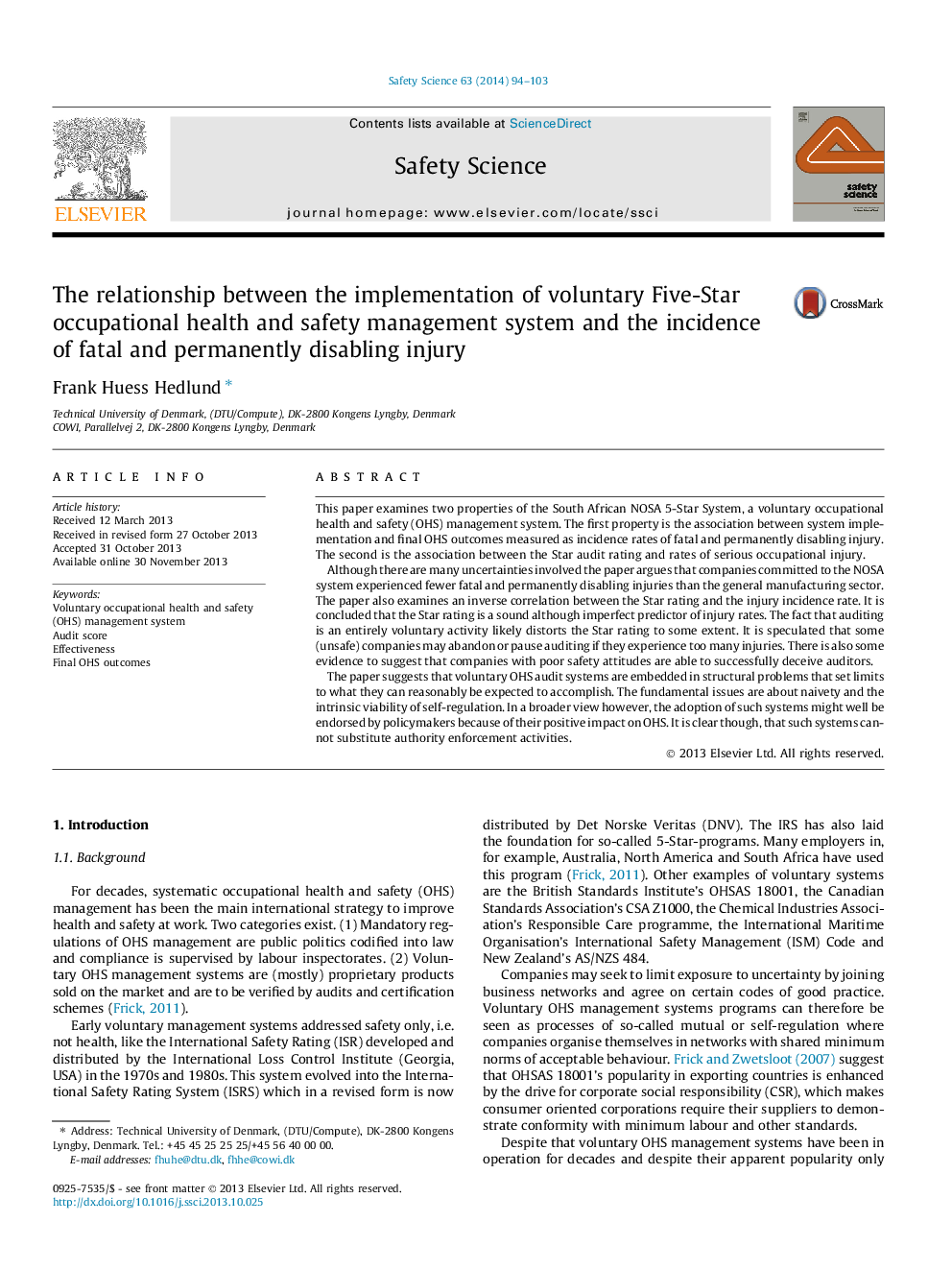| کد مقاله | کد نشریه | سال انتشار | مقاله انگلیسی | نسخه تمام متن |
|---|---|---|---|---|
| 589187 | 1453407 | 2014 | 10 صفحه PDF | دانلود رایگان |
• The NOSA 5-Star System is a voluntary occupational safety management system.
• System implementation is measured with a Star-rating.
• NOSA companies have a lower incidence of serious occupational injury.
• There is inverse correlation between the Star rating and the incidence rate of serious injury.
• The Star rating is a sound although imperfect predictor of injury rates.
This paper examines two properties of the South African NOSA 5-Star System, a voluntary occupational health and safety (OHS) management system. The first property is the association between system implementation and final OHS outcomes measured as incidence rates of fatal and permanently disabling injury. The second is the association between the Star audit rating and rates of serious occupational injury.Although there are many uncertainties involved the paper argues that companies committed to the NOSA system experienced fewer fatal and permanently disabling injuries than the general manufacturing sector. The paper also examines an inverse correlation between the Star rating and the injury incidence rate. It is concluded that the Star rating is a sound although imperfect predictor of injury rates. The fact that auditing is an entirely voluntary activity likely distorts the Star rating to some extent. It is speculated that some (unsafe) companies may abandon or pause auditing if they experience too many injuries. There is also some evidence to suggest that companies with poor safety attitudes are able to successfully deceive auditors.The paper suggests that voluntary OHS audit systems are embedded in structural problems that set limits to what they can reasonably be expected to accomplish. The fundamental issues are about naivety and the intrinsic viability of self-regulation. In a broader view however, the adoption of such systems might well be endorsed by policymakers because of their positive impact on OHS. It is clear though, that such systems cannot substitute authority enforcement activities.
Journal: Safety Science - Volume 63, March 2014, Pages 94–103
